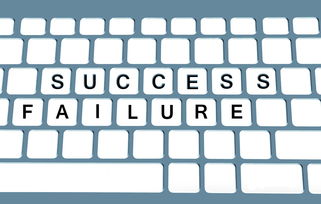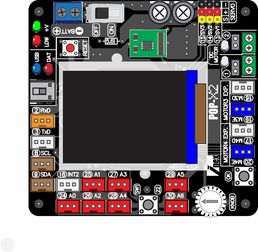一级英语笔译测试题及答案
初级笔译证书证明持有人能够就一般难度的材料进行英汉互译,能够胜任一般性文件或商务等方面材料的翻译工作。下面是我分享的一级英语笔译测试题,希望能帮到大家!
英译汉
Return to print allays bookseller fears of digital apocalypse
Five years ago, the book world was seized by collective panic over the uncertain future of print.
As readers migrated to new digital devices, e-book sales soared, increasing 1,259 per cent between 2008 and 2010, alarming booksellers that watched consumers use their stores to find titles they would later buy online. Print sales dwindled, bookstores struggled to stay open, and publishers and authors feared that cheaper e-books would cannibalise their business.
Then in 2011, the industry's fears were realised when Borders declared bankruptcy.
"E-books were this rocket ship going straight up," said Len Vlahos, a former executive director of the Book Industry Study Group, a nonprofit research group that tracks the publishing industry. "Just about everybody you talked to thought we were going the way of digital music."
But the digital apocalypse never arrived, or at least not on schedule. While analysts once predicted that e-books would overtake print by 2015, digital sales have instead slowed sharply.
Now, there are signs that some e-book adopters are returning to print or becoming hybrid readers who toggle between devices and paper. E-book sales fell by 10 per cent in the first five months of this year, according to the Association of American Publishers, which collects data from nearly 1,200 publishers. Digital books accounted last year for around 20 per cent of the market, roughly the same as a few years ago.
E-books' declining popularity may signal that publishing, while not immune to technological upheaval, will weather the tidal wave of digital technology better than other forms of media, like music and television.
E-book subscription services, modelled on companies like Netflix and Pandora, have struggled to convert book lovers into digital binge readers, and some have shut down. Sales of dedicated e-reading devices have plunged as consumers migrated to tablets and smartphones. And according to some surveys, young readers who are digital natives still prefer reading on paper.
The surprising resilience of print has provided a lift to many booksellers. Independent bookstores, which were battered by the recession and competition from Amazon, are showing strong signs of resurgence. The American Booksellers Association counted 1,712 members with stores in 2,227 locations in 2015, up from 1,410 members with 1,660 locations five years ago.
"The fact that the digital side of the business has levelled off has worked to our advantage," said Oren Teicher, chief executive of the American Booksellers Association. "It's resulted in a far healthier independent bookstore market today than we have had in a long time."
Publishers, seeking to capitalise on the shift, are pouring money into their print infrastructures and distribution. Hachette added 20,000 square metres to its Indiana warehouse late last year, and Simon & Schuster is expanding its New Jersey distribution facility by 18,000 square metres.
Penguin Random House has invested nearly $US100 million in expanding and updating its warehouses and speeding up distribution of its books. It added 34,000 square metres last year to its warehouse in Crawfordsville, Indiana, more than doubling the size of the warehouse.
"People talked about the demise of physical books as if it was only a matter of time, but even 50 to 100 years from now, print will be a big chunk of our business," said Markus Dohle, the chief executive of Penguin Random House, which has nearly 250 imprints globally. Print books account for more than 70 per cent of the company's sales in the United States.
The company began offering independent booksellers in 2011 two-day guaranteed delivery from November to January, the peak book buying months. Other big publishers, including HarperCollins, have followed suit. The faster deliveries have allowed bookstores to place smaller initial orders and restock as needed, which has reduced returns of unsold books by about 10 per cent.
Penguin Random House has also developed a data-driven approach to managing print inventory for some of its largest customers, a strategy modeled on the way manufacturers like Procter & Gamble automatically restock soap and other household goods. The company now tracks more than 10 million sales records a day and sifts through them in order to make recommendations for how many copies of a given title a vendor should order based on previous sales.
"It's a very simple thing; only books that are on the shelves can be sold," Dohle said.
At BookPeople, a bookstore founded in 1970 in Austin, Texas, sales are up nearly 11 per cent this year over last, making 2015 the store's most profitable year ever, said Steve Bercu, the co-owner. He credits the growth of his business, in part, to the stabilisation of print and new practices in the publishing industry, such as Penguin Random House's so-called rapid replenishment program to restock books quickly.
"The e-book terror has kind of subsided," he said.
Other independent booksellers agree that they are witnessing a reverse migration to print.
"We've seen people coming back," said Arsen Kashkashian, a book buyer at Boulder Book Store in Boulder, Colorado. "They were reading more on their Kindle and now they're not, or they're reading both ways."
Digital books have been around for decades, ever since publishers began experimenting with CD-ROMs, but they did not catch on with consumers until 2008, shortly after Amazon released the Kindle.
The Kindle, which was joined by other devices like Kobo's e-reader, the Nook from Barnes & Noble and the iPad, drew millions of book buyers to e-readers, which offered seamless, instant purchases. Publishers saw huge spikes in digital sales during and after the holidays, after people received e-readers as gifts.
But those double- and triple-digit growth rates plummeted as e-reading devices fell out of fashion with consumers, replaced by smartphones and tablets. Some 12 million e-readers were sold last year, a steep drop from the nearly 20 million sold in 2011, according to Forrester Research. The portion of people who read books primarily on e-readers fell to 32 per cent in the first quarter of 2015, from 50 per cent in 2012, a Nielsen survey showed.
Higher e-book prices may also be driving readers back to paper.
As publishers renegotiated new terms with Amazon in the past year and demanded the ability to set their own e-book prices, many have started charging more. With little difference in price between a $US12.99 e-book and a paperback, some consumers may be opting for the print version.
On Amazon, the paperback editions of some popular titles, like The Goldfinch by Donna Tartt and All the Light We Cannot See by Anthony Doerr, are several dollars cheaper than their digital counterparts. Paperback sales rose by 8.4 per cent in the first five months of this year, the Association of American Publishers reported.
Some publishing executives say the world is changing too quickly to declare that the digital tide is waning.
"Maybe it's just a pause here," said Carolyn Reidy, the president and chief executive of Simon & Schuster. "Will the next generation want to read books on their smartphones, and will we see another burst come?"
汉译英:
中信银行成立于1987年,是中国改革开放中最早成立的新兴商业银行之一,是中国最早参与国内外金融市场融资的商业银行,并以屡创中国现代金融史上多个第一而蜚声海内外,为中国经济建设做出了积极的贡献。
中信银行作为国内资本实力最雄厚的商业银行之一,在中国经济发展的'浪潮中快速成长,已经成为具有强大综合竞争力的全国性商业银行。2013年7月,中信银行在英国《银行家》世界1000家银行排名中,一级资本排名第47位,总资产排名第57位,位居中国商业银行前列。 2007年,中信银行实现A+H股同步上市,跻身于国际公众持股银行之列。
中信银行坚持以客户为中心的经营理念,向企业和机构客户提供公司银行业务、国际业务、金融市场业务、机构业务、投资银行业务、保理业务、托管业务等综合金融解决方案;向个人客户提供一般零售银行、信用卡、消费金融、财富管理、私人银行、出国金融、电子银行等多元化金融产品及服务。全方位满足企业及个人客户的综合金融服务需求。
;版权声明
本文仅代表作者观点,不代表百度立场。
本文系作者授权百度百家发表,未经许可,不得转载。








